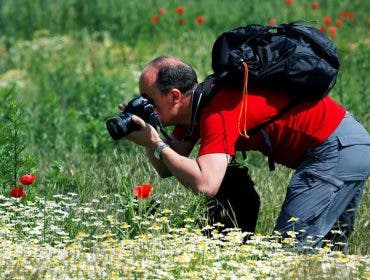Lens whacking isn’t wack at all, it’s actually quite dope! Sorry, if you were born in this millennium you may not get that old slang. Wack is something bad, dope is something good.
So why would you want to do this? By shooting with your lens detached from your camera you can get some interesting lens flares and focus effects similar to the tilt-shift effect. When lens whacking you are letting more light into the sensor so you need to watch out for overexposure. This is definitely a technique that requires a good deal of practice, especially when using it with video. You also have to be ok with a lot of soft, slightly out of focus imagery as this is the feel you get from this technique. The picture below comes from a very good post on the subject by Photojojo, they just refer to it as free lensing. I personally prefer the term lens whacking.
How to do it
The first step is to set your camera to live mode. Since the lens is not attached to your camera, you will be focusing using two methods. In the picture above I am using my index finger to move the focus ring and my thumb and other fingers to move the lens back and forth in and out of the lens housing. When you move the lens around the lens housing this affects the focus leading to some dreamy looking shots. You also get very interesting light leaks and lens flares. The effect is most obvious when your f-stop is as low as your lens will allow. If your image is way too soft, try a slightly slower f-stop. If you do not have a lens with an aperture ring you will likely need to set the aperture in camera while your lens is attached and then dismount your lens. For initial focus it is advisable to set the focus either to infinity or just a hair shy of infinity. You can then focus using the methods listed above as well as by moving your feet.
Make sure to have a solid grip on both the lens and camera when doing this. Depending on your camera and lens setup you may need to utilize a different handholding position from the one I am using. This technique is a lot about experimentation to get what you like, but in a safe way. However, be aware that this effect is best interspersed with other more normal shots or used for a dream-like effect. As such it should be used sparingly.
So what does this effect look like in video? I am going to point you to an expert lens whacker, James Miller. His video below, Romance of the Light, is a beautiful example of what can be achieved with lens whacking in video.
Disclaimer
If you are worried about damaging your lens or lens mount do not try this. If you are worried about dropping your camera or lens, do not try this. If you are worried about getting dust, dirt, or any other elements into your camera, d not try this. If however after reading all these disclaimers you want to try this, definitely have a go!





